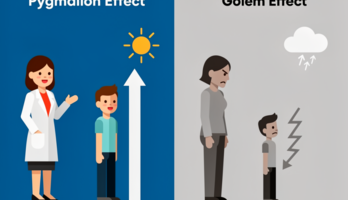Диссертация (1137914), страница 22
Текст из файла (страница 22)
(2004) “Bilateral Donors’ Aid AllocationDecisions: A Three-Dimensional Panel Analysis,” International Review ofEconomics and Finance 13 (2004):253–274.11.Bertoly S., Cornia G.A., Manaresi F. (2008) Aid Effort and its Determinants.Università degli Studi di Firenze. Working Paper N. 11/200812.Bickenbach, F., Mbelu, A., Nunnenkamp, P.
(2017) Is foreign aidconcentrated increasingly on needy and deserving recipient countries? Ananalysis of Theil indices, 1995-2015, Kiel Working Paper, No. 2078, KielInstitute for the World Economy (IfW), Kiel13.Bigsten, A., Isaksson, A.-S., Tengstam, S. (2016). "The Changing Structureof Swedish Foreign Aid," Working Papers in Economics 651, University ofGothenburg, Department of Economics.14.Bodenstein T.
Kemmerling A. (2015) A Paradox of Redistribution inInternational Aid? The Determinants of Poverty-Oriented DevelopmentAssistance. World Development Vol. 76 pp. 359-36915.Bortolleto A.C. (2010) American Foreign Aid: Recent Trends in Goals andAllocation, Social Sciences Journal: Vol. 10 : Iss. 1 , Article 7. Режимдоступа: http://repository.wcsu.edu/ssj/vol10/iss1/716.Bulir, A., & Hamann, J. (2008). Volatility of development aid: from thefrying pan into the fire?. World Development, 36(10), 2048–2066.17.Busan Partnership for Effective Development Co-operation Fourth HighLevel Forum on Aid Effectiveness, Busan, Republic of Korea, 29 Nov. – 1Dec.
2011 URL: http://www.oecd.org/dac/effectiveness/49650173.pdf18.Canavire, G., P. Nunnenkamp, R. Thiele, and L. Triveño (2006). Assessingthe Allocation of Aid: Developmental Concerns and the Self-Interest ofDonors. Indian Economic Journal 54 (1): 26–43.19.Canuto O., Silva A.C., Garcia-Kilroy C. (2014) Long-term Finance inEMEs: Navigating between Risks and Policy Chioses, Economic PremiceNo World Bank 152, June12920.Centlivre G. (2014) A Law, But Still No Changes in France’s InternationalDevelopmentandSolidarityРежимPolicy.доступа:http://www.realityofaid.org/wp-content/uploads/2014/12/9.France.pdf21.Chand, S.
(2011) Who receives Australian aid and why? Australian NationalUniversity.Discussionpaper6.June2011.Режимдоступа:https://devpolicy.anu.edu.au/pdf/papers/DP_6__Who_receives_Australian_aid_and_why.pdf22.Chenery, H. B. (1960). Patterns of industrial growth. The AmericanEconomic Review, 50(4), 624–65423.Civelli A., Horowitz A. W., Teixeira A.
(2013) Is Foreign Aid Motivated byAltruism or Self-Interest? A Theoretical Model and Empirical Test, BEJournalofEconomicPolicyandAnalaysis.Режимдоступа:http://www.uibcongres.org/imgdb/archivo_dpo12977.pdf24.Claessens, S., Cassimon, D., Van Campenhout, B. (2009) Evidence onChangesinAidAllocationCriteria. TheWorldBankEconomicReview 23 (2):185–20825.Cooray, N. S., Shahiduzzaman, Md. (2004) Determinants of Japanese aidallocation: An econometric analysis. International Development Series ,2004 (4). pp.
2-19. ISSN 2004-060026.Dabla-Norris E., Minoiu C., Zanna, L.-F. Business Cycle Fluctuations,Large Macroeconomic Shocks, and Development Aid World DevelopmentVolume 69, May 2015, 44-6127.Dang, H. -A., Knack, S. & Rogers, H. (2009). International aid and financialcrises in donor countries.
World Bank Policy Research working paper no.5162. Washington, DC: The World Bank Group.28.Department for International Development (2016) Single departmental plan:2015 to 2020. https://www.gov.uk/government/publications/dfid-singledepartmental-plan-2015-to-2020/single-departmental-plan-2015-to-202013029.Dietrich S (2013) Bypass or Engage? Explaining Donor Delivery Tactics inForeign Aid Allocation. International Studies Quarterly. Volume 57, Issue 4.December 2013, pp.
698-71230.Dollar D., Levin V. The Increasing Selectivity of Foreign Aid, 1984–2003.World Development, 2006, pp. 34–4631.Dollar, David and Victoria Levin, “The Increasing Selectivity of ForeignAid, 1984–2003,”World Development 34 (2006):2034–2046.32.Domar E. (1946) Capital Expansion, Rate of Growth, and Employment.Econometrica, Vol. 14, No. 2 (Apr., 1946), pp. 137-14733.Doucouliagos, H., Manning, E., (2009) "The allocation of development aidassistance:donewdonorshaveoldmotives?," WorkingPapers eco_2009_17, Deakin University, Department of Economics.34.Dreher, A.
Nunnenkamp, P. Schmaljohann M. (2013) The Allocation ofGerman Aid: Self-interest and Government Ideology. Kiel Working PaperNo. 181735.Dreher, A. Nunnenkamp, P. Thiele, R. (2011) Are ‘New’ Donors Different?Comparing the Allocation of Bilateral Aid Between nonDAC and DACDonor Countries. World Development Vol.
39, No. 11, pp. 1950–1968,36.Dreher, A., Fuchs, A. (2015) Rogue aid? An empirical analysis of China'said allocation. Canadian Journal of Economics/Revue Canadienned`Economique 48(3):988-102337.Dreher, A., Fuchs, A., Parks, B.C., Strange, A. M., & Tierney, M. J.(2017). Aid, China, and Growth: Evidence from a New Global DevelopmentFinance Dataset. AidData Working Paper #46. Williamsburg, VA: AidData.38.Drury, A. C. , R.
S. Olson , D. A. Van Belle (2005): The politics ofhumanitarian aid: US foreign disaster assistance, 1964–1995, in: The Journalof Politics 67 (2), 454–47339.Easterly W. (2008) Reinventing Foreign Aid. Cambridge: MIT Press.13140.EU(2007)EuropeanConsensusonDevelopment,https://ec.europa.eu/europeaid/policies/european-developmentpolicy/european-consensus-development_en41.European Commission (2009) Economic Crisis in Europe: Causes,Consequences and Responses. Luxembourg: Office for Official Publicationsof the European Communities, 90 стр.42.Faini R.
(2006) Foreign aid and fiscal policy. CEPR discussion paper no.5721. Washington, DC: Center for Economic and Policy Research, 200643.Faust, J., Ziaja S. (2012). German Aid Allocation and Partner CountrySelection: Development Orientation, Self-interests and Path Dependency.Discussion Paper 7/2012. German Development Institute. Bonn.44.Federal Ministry for Economic Cooperation and Development (2011) TheGerman14thGovernment’sDevelopmentPolicyReport.https://www.bmz.de/en/publications/archiv/topics/development_policy/Weissbuch_large.pdf45.Federal Public Service Foreign Affairs, Kingdom of Belgium. DevelopmentCooperation.https://diplomatie.belgium.be/en/policy/development_cooperation/where_we_work/partner_countries46.Feeny, Simon and Mark McGillivray, “What Determines Bilateral AidAllocations? Evidence from Time Series Data,” Review of DevelopmentEconomics 12 (2008):515–29.47.Fitzsimons, E., Rogger D.
and Stoye G. (IFS). UK Development Aid. // CarlEmmerson, Helen Miller (eds). Th e IFS Green Budget: February 2012InstituteforFiscalStudies,2012.URL:http://www.ifs.org.uk/budgets/gb2012/12chap7.pdf48.Frank A.G. (1972) "The Development of Underdevelopment," in James D.Cockcroft, Andre Gunder Frank, and Dale Johnson, eds., Dependence andUnderdevelopment. Garden City, New York: Anchor Books, 197213249.French Ministry of Foreign and Economic Affairs, DevelopmentCooperation: A French Vision, Framework Document. Paris: DirectorateGeneral of Global Affairs, Development and Partnerships, 2011.https://franceintheus.org/IMG/pdf/Doc_Cadre_ANG_2011.pdf50.French Ministry of Foreign Affairs and International Development, 2014,“On guidelines and programmeprioritiesrelating to developmentand international solidarity policy” Law No.
2014-773 of 7 July 2014,https://www.legifrance.gouv.fr/affichTexte.do?cidTexte=JORFTEXT000029210384&categorieLien=id51.Frot E. (2009). Aid and the financial crisis: Shall we expect developmentaid to fall? SITE/Stockholm School of Economics, Stockholm, Sweden(Unpublished manuscript).52.Fuchs A., Dreher A. (2014) Determinants of Donor Generosity: A Survey ofthe Aid Budget Literature World Development, 2014, vol. 56, issue C, 17219953.Furtado, Celso. 1973.
“The Concept of External Dependence in the Study ofUnderdevelopment.” In Wilber, pp. 118–123.54.G20 (2009) Leaders’ Statement 2 April 2009. Режим доступа:https://www.imf.org/external/np/sec/pr/2009/pdf/g20_040209.pdf55.Gates, S. Hoeffler, A. (2004) Global Aid Allocation: Are Nordic DonorsDifferent? CSAE Working Paper Series 2004-34, Centre for the Study ofAfrican Economies, University of Oxford.56.Gounder R. Sen K. (1999) What motivates foreign aid: A case study ofAustralia's aid to Indonesia. Journal of Developing Areas 33(3): 379-394.March 1999.57.Gounder, R. (1994), “Empirical Results of Aid Motivations: Australia’sBilateral Aid Program,” World Development, 22(1), 99-11358.Griffith-Jones S., Griffith-Jones D., Hertova D.
(2008) Enhancing the Roleof Regional Development Banks, G-24 Discussion Paper Series, 200813359.Griffith-Jones S., Kollatz M. (2016) Infrastructure Finance in theDeveloping World, G24 Working paper series. Режим доступа:https://www.g24.org/wp-content/uploads/2016/05/MARGGK-WP09.pdf60.Gulhati R., Nallari R. (1988) Reform of Foreign Aid Policies: The Issue ofInter-Country Allocation in Africa. WorldDevelopment, Vol. 16, No. 10, pp.1167-1184,61.Hallet M. (2009) Economic cycles and development aid: What is theevidence from the past? ECFIN Economic Brief 5, European Commission’sDirectorate-General for Economic and Financial Affairs, November 200962.Harrod, R.
















